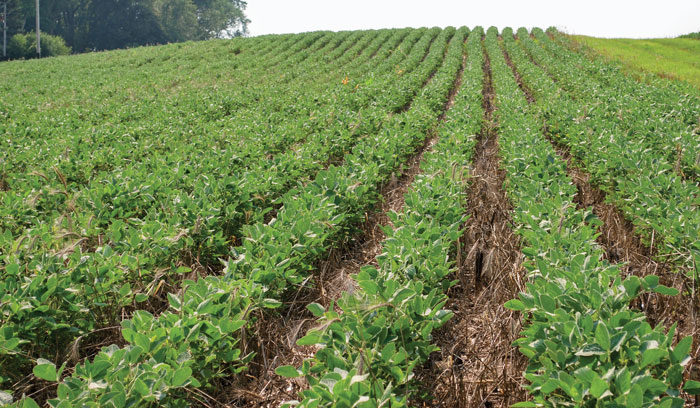No-Till Farmer
Get full access NOW to the most comprehensive, powerful and easy-to-use online resource for no-tillage practices. Just one good idea will pay for your subscription hundreds of times over.

ADJUSTING TO PLANTING GREEN. Dale Stevermer says he has become a lot more comfortable with planting soybeans into green cereal rye. Soybeans were planted into the cereal rye when the cover crop was about knee-high, around May 14.
DALE STEVERMER of Easton, Minn., is soft-spoken but comports himself with confidence and pride. That shows on his 450-acre farm — everything is clean, tidy and each item in its place. The century farm belonged to his paternal grandparents, who purchased the first 120 acres in 1916. Some of the acres are part of another century farm from his mother’s side of the family that was purchased in 1912.
“In 1959, my parents got married and bought the farm from my grandparents,” he says. “I started farming in 1988, and my wife, Laurie, and I moved out to the farm in 1992, along with our three children.”
Crops and pigs have been the mainstay of the farming operation over the decades, according to Stevermer. The acres are split equally between corn and soybeans. During the 2020 growing season, Stevermer used covers on 100% of his acres.
Stevermer first began dabbling with cover crops in 2014, calling himself a “newbie” to the practice. He switched to no-till in 2017 and says he’s still learning when it comes to no-till and cover crops.
“I have a brother who’s a doctor, and we’re both ‘practicing,’” he jokes. “I wanted to control erosion and started hearing about the fact that cover crops can do a better job of eliminating compaction.”
During Stevermer’s first year of no-tilling, he also switched rotations within fields so he had more corn-on-corn acres. He learned that what he’d done in the past would have a negative…